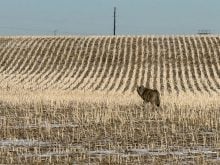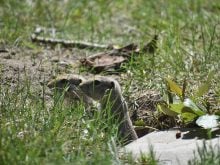LETHBRIDGE – Sharing water is a possible future for Alberta, but for some, trying to satisfy many users is already a reality.
The Western Irrigation District east of Calgary, which is controlled by 700 farmers, must serve municipal water needs, keep wetlands wet and handle storm water from more than one million people upstream.
The district has entered partnerships to share the resource and finance water sharing schemes.
“Other water users represent 40 percent of our income,” district manager Jim Webber said during the Alberta Irrigation Projects Association annual meeting in Lethbridge Feb. 9.
Read Also

Agritechnica Day 2: The future of tractor power, building quicker crop apps and large farms and tech
Agritechnica Day 2: The future of tractor power, building quicker crop apps with Syngenta and large farms and tech
He sees the district operating like a municipality but in charge of water rather than roads.
He said irrigation districts have delivery infrastructure; now new ways must be found to satisfy everyone.
“We can open up our systems more,” he said.
New agreements have been signed with the City of Calgary to handle storm water and build wetlands and with the City of Strathmore to support parks along its canals.
Calgary has built $76 million worth of storm water works on the southeastern city limits that will divert water to a wetlands project and then back to the Bow River.
Handling storm water is contentious for the district because it is full of phosphorus, fecal coliform and other undesirable byproducts.
The district is also involved in a regional concept to build a 50,000 acre feet storage system with partners in the Municipal District of Rockyview, Wheatland County and towns in the district. It could handle 25 years of urban growth, and Calgary could also tap in if necessary.
Another 8,000 acre feet are expected to be required for growth in the district and its communities in the next 25 years.
The system could store three to five years worth of water that would be fed through pipeline systems. It would include a state of the art water treatment system.
These co-operative agreements could be one way to satisfy society’s needs in the vulnerable South Saskatchewan River basin.
The region is the most developed in Alberta with a population of more than 1.4 million. Brent Paterson of Alberta Agriculture said it covers less than 20 percent of the province but produces about 50 percent of the economic activity.
A review of the basin has found that demand could outstrip the supply and is likely to increase. A supply study is expected to be released within months so planners can make better decisions about allocation.
“If we project into the future in terms of the demand for water within the licences allotted, there is enough water available to meet the demand but there could be pressure on junior licences issued 10 years ago,” he said.















